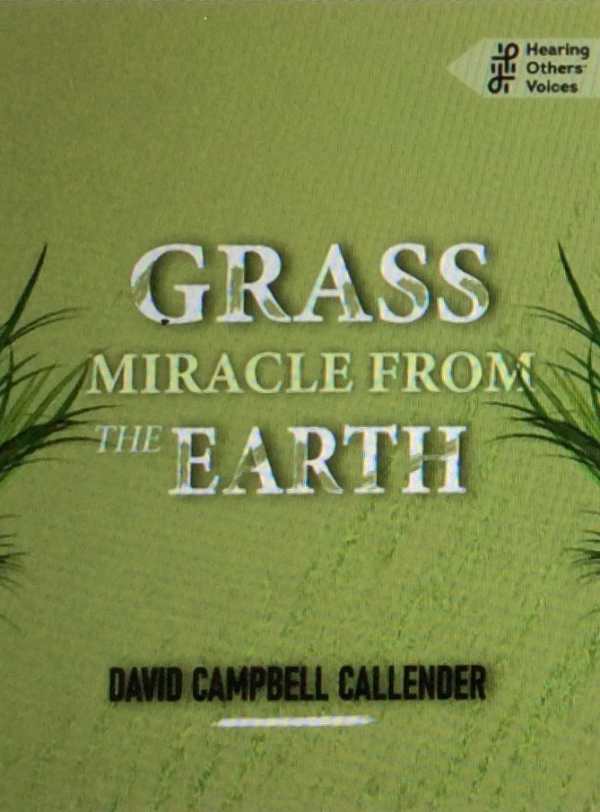
Grass Miracle from the Earth
Filled with facts, fables, and fun, Grass Miracle from the Earth argues that the ubiquitous but often overlooked plant family deserves a place of honor.
David Campbell Callender’s informative Grass Miracle from the Earth concerns a humble, often overlooked plant upon which life on Earth depends.
To bolster its argument that plants in the grass family are important, the book delivers surprising facts, including that there are more than ten thousand species of grass. These evolved over more than fifty million years; they include plants as varied as maize, rice, and sugarcane, along with the familiar grasses used to beautify homes, parks, and public spaces.
Found on every continent, grasses comprise about seventy percent of all agricultural crops worldwide, the book says. It emphasizes that grass is used in art, design, and clothing; in medicine; as food and shelter for animals, humans, and insects; and to prevent erosion and enrich soils. An overview of the worldwide mythology and symbolism surrounding grass is included.
Audiences may be surprised to learn that the Bible mentions the short life of grass, using it as metaphor for the brevity of human life and reflecting upon its ability to regenerate and renew. Plants of the grass family are also celebrated in creation stories and ceremonies worldwide; the book relays a number of these, highlighting the accounts of Native American tribes. It includes the results of recent research on the effects of green, a dominant color in nature, on human well-being, suggesting that green spaces invigorate the intellect and enhance creativity, as well as contributing to stress reduction, relaxation, and healing.
With its new perspective on a vitally important plant family, the book begins in a lighthearted way, but is soon heavy with scientific terminology. Its disjointed writing style means that there is no unifying voice in the text. Incorrect punctuation and spelling errors are an additional point of distraction, as are the book’s missing and misused words and incomplete and unclear sentences.
The colorful and pleasing photographs included are most often decorative rather than informative. Many are included without captions, and their placement appears random. Quotes from literature, poetry, myths, and song lyrics enhance the text, though one is not credited.
The book’s layout and design are disorganized. There are frequent errors in spacing, margins, and placement. Some sentences, parts of charts, and words are highlighted against a light blue background, while other parts of the same text are without background color. Part of a chart is cut off, and the font size changes without clear cause.
The most helpful of the book’s charts condense information in a useful way. The book’s suggestions for further reading, and the references provided, are helpful. Thoughtful questions for discussion, reflection, and action provide opportunities for exploring one’s personal attitudes toward grass.
Filled with facts, fables, and fun, Grass Miracle from the Earth argues that the ubiquitous but often overlooked plant family deserves a place of honor.
Reviewed by
Kristine Morris
Disclosure: This article is not an endorsement, but a review. The publisher of this book provided free copies of the book and paid a small fee to have their book reviewed by a professional reviewer. Foreword Reviews and Clarion Reviews make no guarantee that the publisher will receive a positive review. Foreword Magazine, Inc. is disclosing this in accordance with the Federal Trade Commission’s 16 CFR, Part 255.
